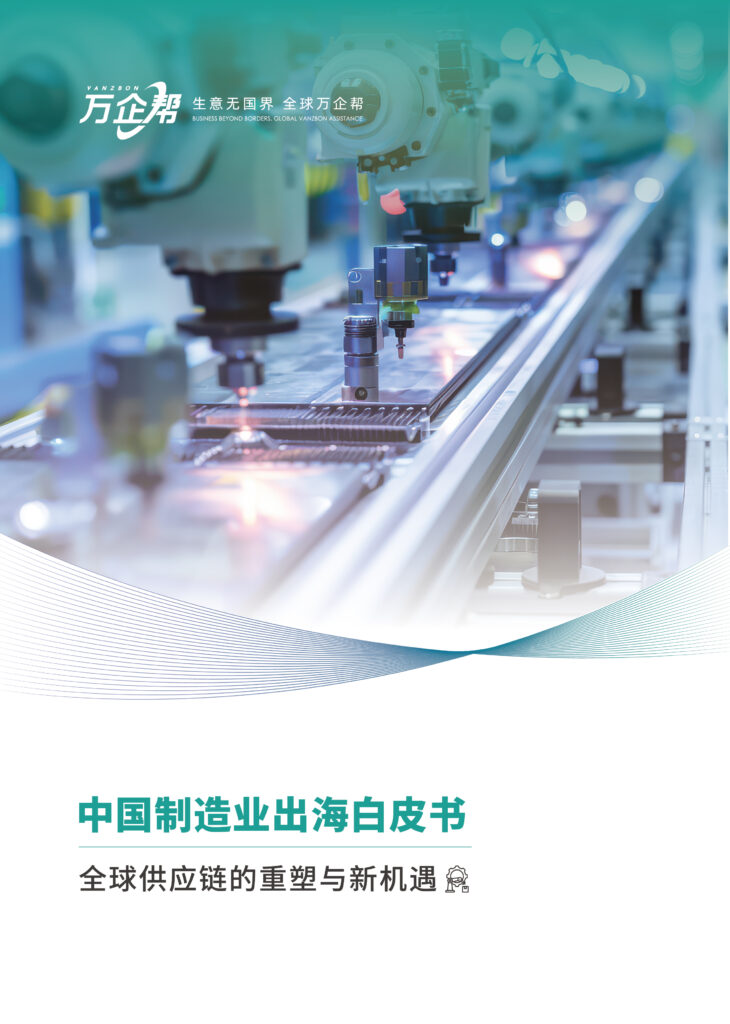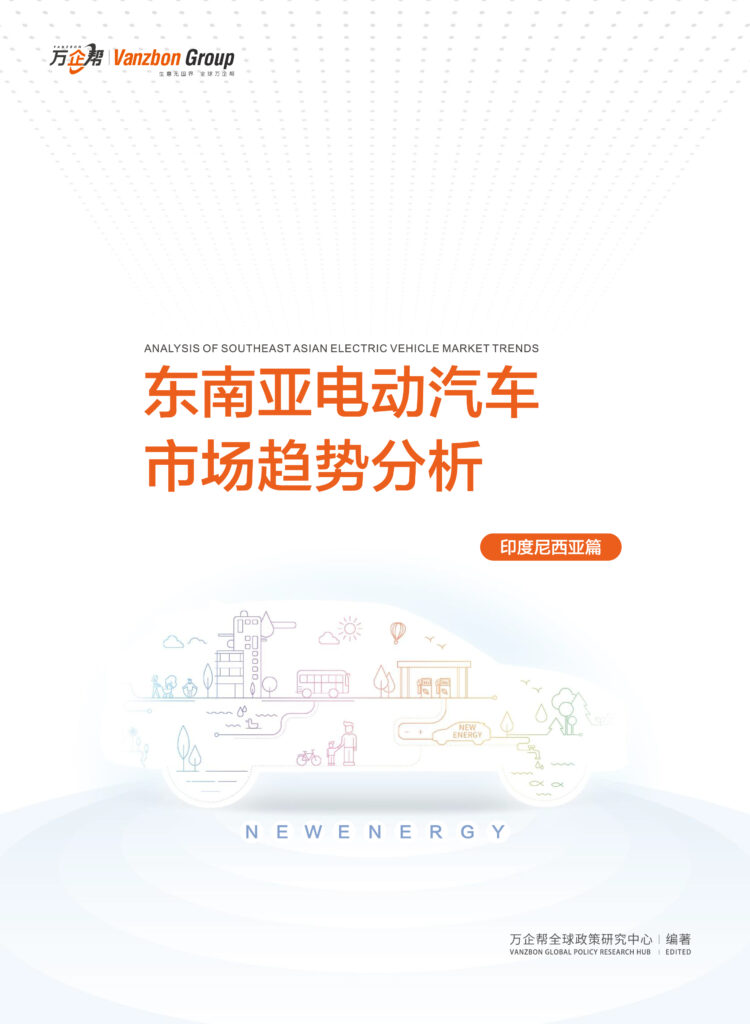As the world’s third largest economy, Japan has long been known for its technological innovation and high-quality products. However, in recent years, Japan has faced challenges such as an aging population and slowing economic growth, which makes innovation increasingly important to maintain its global competitiveness. The Japanese government and business community are actively promoting innovation strategies to meet these challenges and create new growth opportunities.
In the Global Innovation Index, Japan has always been at the forefront, which fully demonstrates its advantages in R&D investment, number of patent applications and high-tech product exports. In particular, in the fields of robotics, artificial intelligence, clean energy, etc., Japanese companies are leading the global innovation trend. At the same time, Japan is also actively cultivating an open innovation ecosystem and encouraging cooperation between start-ups and large companies to accelerate the innovation process.
The importance of innovation to the Japanese economy is self-evident. First, it is a key driver of productivity and economic growth. By developing new technologies and improving production processes, Japanese companies are able to maintain their competitive advantage in the global market. Second, innovation helps solve social issues facing Japan, such as medical needs in an aging society and environmental sustainability. Third, innovation opens up new industries and employment opportunities for Japan, especially in the digital economy and green technology fields.
Recognizing the strategic importance of innovation, the Japanese government has launched the “Society 5.0” strategy, which aims to create a smarter and more sustainable society through digital transformation and technological innovation. This strategy covers a variety of areas, from healthcare to smart cities, and reflects Japan’s determination to transform its economy into an innovation-driven one.
However, Japan also faces challenges in promoting innovation. For example, compared with global innovation centers such as Silicon Valley, Japan’s entrepreneurial ecosystem still needs to be improved. In addition, Japanese companies also need to further strengthen their globalization and cross-cultural innovation cooperation. Overcoming these challenges will provide an opportunity for Japan to start a new round of innovation and economic growth.
In general, innovation is reshaping Japan’s economic landscape and social structure. For international companies interested in entering the Japanese market or cooperating with Japanese companies, a deep understanding of Japan’s innovation ecosystem and the latest trends will provide important guidance for seizing business opportunities and formulating effective strategies. In the following content, we will delve into the specific innovation trends in various industries in Japan to provide readers with comprehensive and practical market insights.
Macro innovation trends
Japan’s macro-innovation trends are undergoing profound changes, driven by four key factors: demographic changes, digital transformation, sustainable development needs, and the rise of an open innovation ecosystem. These trends are not only shaping Japan’s innovation landscape, but also bringing new opportunities and challenges to domestic and foreign companies.
The impact of demographic changes on innovation is the most significant. As one of the countries with the highest aging population in the world, Japan faces the dual challenges of labor shortage and increasing social security pressure. This situation is driving Japan to innovate in the fields of medical health, elderly care services, and labor efficiency. For example, the development of nursing robots, the application of telemedicine technology, and the popularization of artificial intelligence-assisted systems are all innovative products to cope with the aging population. At the same time, in order to alleviate the labor shortage, automation technology and efficiency improvement solutions have been widely used in all walks of life.
The acceleration of digital transformation is another major trend of innovation in Japan. Driven by the government’s “Digital Japan” strategy, all fields, from traditional manufacturing to service industries, are actively embracing digital technology. The Internet of Things (IoT), big data analysis, cloud computing, and artificial intelligence are reshaping the operating model and value creation methods of enterprises. Especially in the post-epidemic era, the popularization of digital solutions such as remote work, online education, and e-commerce has significantly accelerated, promoting the digitalization process of the entire society.
Sustainable development and green innovation are important measures for Japan to respond to the global call for climate change and environmental protection. The Japanese government has pledged to achieve carbon neutrality by 2050. This ambitious goal is driving innovation in clean energy, circular economy, green transportation and other fields. Hydrogen energy technology, renewable energy storage solutions, electric vehicles and their supporting facilities are all key investment directions for Japanese companies. In addition, environmental innovations such as reducing the use of plastics and developing biodegradable materials have also received widespread attention.
The development of an open innovation ecosystem marks a major shift in Japan’s innovation model. Traditionally, large Japanese companies tend to rely on internal R&D. However, faced with the pressure of global competition and rapid technological iteration, more and more Japanese companies are beginning to seek external cooperation. The government and large companies are actively cultivating the entrepreneurial ecosystem, setting up business incubators and accelerators, and encouraging industry-university-research cooperation. Cities such as Tokyo, Osaka, and Fukuoka are emerging as regional innovation centers, attracting domestic and foreign entrepreneurs and investors. This open innovation not only accelerates technological breakthroughs, but also introduces more diversified innovative thinking to Japan.
These macro innovation trends are intertwined and together are driving Japan towards a smarter, more sustainable, and more dynamic innovation society. For companies looking to find opportunities in the Japanese market, it is crucial to have a deep understanding of these trends. They not only affect market demand and consumer behavior, but also shape business models and the competitive landscape. In the following chapters, we will further explore how these macro trends specifically affect innovation practices in various industries.
Innovation analysis of key industries
As a global innovation powerhouse, Japan has demonstrated remarkable innovation trends in many key industries. This article will analyze the latest developments in seven major areas: manufacturing, information technology, healthcare, financial technology, retail and e-commerce, energy and environment, and education.
In terms of manufacturing, Japan is fully embracing the era of Industry 4.0. Large manufacturers such as Toyota and Hitachi have invested heavily in upgrading smart factories and optimizing production processes using the Internet of Things, big data analysis and artificial intelligence technologies. The application of robotics technology is a highlight of Japan’s manufacturing industry. It is not only widely used in industrial production, but also extends to the service industry, such as the development of medical care robots. In addition, the research and development of new materials is also the key to Japan’s competitiveness in the manufacturing industry, such as Toray’s continuous innovation in the field of carbon fiber materials.
In the field of information technology, Japan has invested heavily in artificial intelligence and machine learning. SoftBank Group’s artificial intelligence strategy and Honda’s autonomous driving technology research and development are typical cases. The commercialization of 5G technology is accelerating, and telecommunications giants such as NTT DoCoMo are laying 5G networks across the country to lay the foundation for the construction of the Internet of Things and smart cities. Blockchain technology has also received widespread attention. The Financial Services Agency of Japan is actively promoting the application of blockchain in financial services, such as the digital currency developed by Mitsubishi UFJ Financial Group.
Healthcare innovation is particularly important in the context of Japan’s aging society. Telemedicine is developing rapidly, and many hospitals and clinics have begun to provide online consultation services. In terms of personalized medicine, the application of genetic testing technology is becoming more and more popular, such as the home genetic testing service provided by DeNA Life Science. Technological innovation in elderly care has also attracted much attention, such as the nursing robot and smart home system developed by Panasonic, which aims to improve the quality of life of the elderly.
Fintech innovation is reshaping Japan’s financial services landscape. In terms of cashless payments, mobile payment platforms such as Line Pay and PayPay are rapidly gaining popularity, driving Japan’s transformation into a cashless society. In the field of insurance technology, traditional insurance companies such as Tokio Marine & Nichido Fire Insurance are working with technology companies to develop personalized insurance products based on the Internet of Things. Regulatory technology (RegTech) is also on the rise, such as Nomura Holdings using AI technology to enhance compliance management capabilities.
Innovations in the retail and e-commerce sectors are refreshing. Omnichannel retail models are booming in Japan, such as UNIQLO, which enhances the shopping experience by integrating online and offline. Virtual reality (VR) and augmented reality (AR) technologies are being applied to the shopping experience, such as Shiseido’s virtual makeup trial app. In terms of personalized recommendation systems, e-commerce giants such as Rakuten continue to optimize algorithms to provide accurate product recommendations.
In the field of energy and environment, Japan is actively promoting innovation to achieve sustainable development. Breakthroughs in renewable energy technology are constantly being made, such as the improvement of solar cell efficiency and the construction of offshore wind farms. Hydrogen energy development has attracted much attention, and automakers such as Toyota have invested heavily in hydrogen fuel cell technology. Circular economy innovations are also being carried out in all walks of life, such as advanced garbage sorting and recycling systems, and the widespread use of degradable materials.
Innovations in education are changing the way Japan learns. Online education platforms such as Zhui and Eiko Zenar have launched online courses to meet diverse learning needs. AI-assisted teaching technology is becoming more popular, such as the personalized learning system developed by Atama Plus. New models of lifelong learning are also emerging, such as the online skill improvement platforms provided by companies such as KDDI and NEC for employees to help professionals continue learning.
The innovation trends in various industries in Japan show how the country copes with challenges such as an aging population and economic transformation. These innovations not only promote the development of the Japanese economy, but also provide valuable experience and inspiration for other countries and regions around the world.
Innovation support policies and environment
The Japanese government has long attached great importance to innovation, viewing it as the core driving force for economic growth and social development. In recent years, the government has launched a series of innovation support policies aimed at creating a world-leading innovation ecosystem. Among them, the “Society 5.0” strategy is particularly eye-catching. The strategy is committed to solving social problems and creating new value through digital transformation and cutting-edge technology applications. The government has also established a number of financial support programs, such as the “Innovation Network Company Support Program”, to provide financial and resource support for start-ups. In addition, tax incentives are also being continuously improved to encourage companies to increase R&D investment and promote innovation activities.
Japan’s entrepreneurial ecosystem has flourished in recent years, forming innovation clusters represented by Tokyo, Osaka and Fukuoka. These regions are home to a large number of entrepreneurial incubators, accelerators and shared workspaces, providing all-round support for entrepreneurs. The venture capital market is also becoming increasingly active, with not only local venture capital actively participating, but also international capital beginning to favor Japanese innovative companies. Large companies have further enriched the entrepreneurial ecosystem by establishing corporate venture capital (CVC) and open innovation platforms to conduct in-depth cooperation with start-ups. The government-led “J-Startup” project provides customized support for high-potential start-ups to help them grow rapidly and enter the international market.
Industry-university-research cooperation is an important pillar of Japan’s innovation system. Japan has world-class research universities and research institutions, such as the University of Tokyo, Kyoto University and the RIKEN Institute of Physical and Chemical Research. These institutions maintain close cooperation with the industry to promote the commercialization of scientific research results through joint research, technology transfer and talent exchange. The government actively promotes industry-university-research cooperation and implements the “government-industry-university-finance” cooperation model to encourage the government, enterprises, academia and financial institutions to jointly participate in innovation activities. Many science and technology parks and innovation centers have also been established in various places, such as Tsukuba Research Park City and Kobe Medical Industry City, which provide an ideal platform for industry-university-research cooperation. This close cooperation model not only accelerates technological innovation, but also cultivates a large number of talents with innovative thinking and practical ability.
In general, Japan’s innovation support policies and environment are constantly being optimized, providing strong support for innovation activities. The government’s active guidance, a sound entrepreneurial ecosystem, and close industry-university-research cooperation have jointly built a comprehensive environment conducive to innovation. This not only provides development opportunities for local companies, but also creates good conditions for international companies that are interested in developing the Japanese market. However, in the face of intensified global innovation competition, Japan is still constantly adjusting and improving its innovation strategy to maintain and enhance its position in the global innovation landscape.
Innovation Case Analysis
1.Manufacturing Innovation Case: Toyota’s Hydrogen Fuel Cell Technology
Toyota’s innovation in hydrogen fuel cell technology has led a new direction for Japan’s automotive industry. The company’s Mirai hydrogen fuel cell model demonstrates its outstanding innovation in environmentally friendly technology. Toyota’s success is due to its long-term investment in research and development, close cooperation with government and academic institutions, and a firm commitment to environmental sustainability. This innovation not only promotes the development of Japan’s hydrogen energy infrastructure, but also sets an example for the decarbonization of the entire automotive industry, with far-reaching impact.
2.Information Technology Innovation Case: SoftBank Group’s Artificial Intelligence Investment Strategy
SoftBank Group has demonstrated the innovative vitality of Japan’s IT industry through its Vision Fund’s bold investments in artificial intelligence. The company’s strategic investments in global AI startups, such as its acquisition of British chip design company Arm, reflect its forward-looking technological insight. SoftBank’s success lies in its keen market judgment, strong capital strength, and accurate grasp of the application prospects of AI technology in various industries. This strategy has not only promoted the development of Japan’s AI ecosystem, but also enhanced Japan’s influence on the global technological innovation stage.
3.Healthcare Innovation Case Study: Regenerative Medicine Research at Sanofi
Sanofi’s innovative research in the field of regenerative medicine represents the cutting-edge level of Japan’s biopharmaceutical industry. The company focuses on developing new treatments based on stem cell technology, especially in the treatment of cardiovascular diseases. Sanofi’s success is due to its strong R&D team, close cooperation with top medical institutions, and the Japanese government’s policy support for regenerative medicine. This innovation has brought new hope to patients with intractable diseases and consolidated Japan’s leading position in global biopharmaceutical innovation.
4.Fintech Innovation Case: Rakuten Bank’s Digital Banking Services
Rakuten Bank has revolutionized Japan’s financial services industry through its comprehensive digital banking services. As Japan’s first online-only bank, Rakuten Bank uses advanced AI and big data technologies to provide customers with personalized financial solutions. The company’s success stems from its agile technological innovation capabilities, its high attention to user experience, and its deep integration with the Rakuten ecosystem. This innovative model not only improves the service efficiency of the banking industry, but also promotes the digital transformation of Japan’s financial industry and sets a new standard for traditional banking.
5.Retail innovation case: Uniqlo’s flexible supply chain management
UNIQLO stands out in the Japanese retail industry with its innovative flexible supply chain management system. The company adopts an integrated “planning-design-sales” model, and responds quickly to changes in market demand through real-time data analysis and flexible production. The key to UNIQLO’s success lies in its continuous investment in technological innovation, close cooperation with suppliers, and keen understanding of consumer needs. This innovation not only greatly improves the company’s operational efficiency, but also provides valuable experience for the digital transformation of the Japanese retail industry.
Each case demonstrates the innovation capabilities and strategic vision of Japanese companies in their respective fields, providing readers with a window to gain in-depth insights into the innovation trends in the Japanese market. These successful cases not only reflect Japan’s technological strength, but also highlight the competitive advantages and development potential of Japanese companies in the global market.
Future Outlook
As a global innovation powerhouse, Japan’s future development direction has attracted much attention. In terms of emerging technology trends, artificial intelligence (AI) and quantum computing are expected to achieve major breakthroughs in the next decade. AI technology will be more deeply integrated into all walks of life, from medical diagnosis to financial risk control to industrial production, and will usher in a qualitative leap. The development of quantum computing may completely change the fields of data processing and cryptography, giving Japan an advantage in the global science and technology competition.
In the field of potential disruptive innovation, we should pay close attention to biotechnology and clean energy. Japan’s research on regenerative medicine and gene editing technology is accelerating, and is expected to make breakthroughs in cancer treatment and anti-aging. At the same time, as the Japanese government vigorously promotes the development of hydrogen energy, we may see a clean energy revolution that will completely change Japan’s energy structure and transportation system.
In terms of international cooperation and innovation opportunities, Japan is actively opening up its innovation ecosystem to attract global talent and capital. It is expected that more multinational companies will set up R&D centers in Japan in the future, as well as in-depth cooperation between Japanese companies and overseas startups. In particular, Japan will play an important role in addressing global challenges such as climate change and an aging population, creating new opportunities for international cooperation.
It is worth noting that Metaverse technology is also rapidly emerging in Japan. Considering Japan’s advantages in the game and animation industries, we may see Japanese companies lead global innovation in virtual reality (VR) and augmented reality (AR), creating new social, entertainment and business models.
In addition, as Japanese society attaches more importance to sustainable development, circular economy innovation will become an important trend in the future. From the development of biodegradable materials to the construction of efficient recycling systems, Japanese companies are expected to set a global benchmark in this field and provide innovative solutions to environmental problems.
In general, Japan’s future innovation path will be diversified and cross-domain. Through technological breakthroughs, industrial transformation and international cooperation, Japan is expected to maintain its leading position in many cutting-edge fields and make important contributions to global sustainable development. For companies interested in entering the Japanese market, grasping these innovation trends will be the key to gaining an advantage in future competition.
Implications and suggestions for Chinese enterprises
1.Innovative strategies for entering the Japanese market
The Japanese market is known for its high level of maturity and demanding consumers, which brings challenges to Chinese companies, but also creates opportunities. To succeed in the Japanese market, Chinese companies need to adopt precise innovation strategies. First, product localization is crucial. This is not just a simple language translation, but also a deep understanding of the needs and preferences of Japanese consumers, and the corresponding adjustment and optimization of products. Second, quality comes first. Japanese consumers have extremely high requirements for product quality, so Chinese companies must ensure that their products meet or even exceed the quality standards of local Japanese brands.
In addition, embracing advanced technology is also the key to entering the Japanese market. Japan is one of the leaders in global technological innovation. Chinese companies should actively use emerging technologies such as artificial intelligence, the Internet of Things, and big data to enhance the competitiveness of their products and services. At the same time, it is also essential to establish a strong local cooperation network. By cooperating with local Japanese companies and research institutions, market entry can be accelerated and valuable local resources and knowledge can be obtained. Finally, maintain flexibility and agility in innovation. The Japanese market changes rapidly, and Chinese companies need to establish a rapid response mechanism and adjust strategies in a timely manner to adapt to changes in market demand.
2.Potential cooperation and investment opportunities
The Japanese market contains abundant opportunities for cooperation and investment, especially in certain specific areas. First, the surge in demand for healthcare and elderly care services brought about by an aging society provides a broad market space for Chinese companies. In particular, in the fields of smart medical equipment and telemedicine services, the technological advantages of Chinese companies can be fully utilized. Secondly, Japan is vigorously developing renewable energy and energy-saving technologies, which creates cooperation opportunities for Chinese new energy companies, especially in the fields of solar energy and wind energy.
Artificial intelligence and robotics are another area with great potential. Japan has a deep accumulation in industrial robots, while China is developing rapidly in AI algorithms and application scenarios. The complementary advantages of both sides can produce huge synergy effects. In addition, there are huge opportunities in e-commerce and mobile payments. Although the penetration rate of mobile payments in Japan is relatively low, it has grown rapidly in recent years. Chinese companies can use their rich experience in this field to explore the Japanese market. Finally, the cultural and creative industry is also an investment direction worthy of attention, especially in the fields of animation, games, virtual reality, etc., China and Japan have broad space for cooperation.
3.Cultural and institutional differences that need attention
When entering the Japanese market, understanding and respecting cultural and institutional differences is the key to success. First, Japanese business culture emphasizes harmony, etiquette and long-term relationships. Chinese companies need to learn Japanese business etiquette, such as the correct way to exchange business cards and proper bowing etiquette. The decision-making process in Japan is often slow and requires consensus from multiple parties. Chinese companies should be patient and not rush for success. Second, Japanese corporate structures are usually hierarchical and communication methods are more indirect. In business exchanges, pay attention to listening and observing to understand the underlying meaning.
In terms of system, Japan has a complex legal system, especially strict regulations on labor law and intellectual property protection. Chinese companies need to fully understand the relevant laws and it is best to hire local legal advisers to ensure compliance. In addition, Japan’s quality standards and certification system are also relatively strict, and products often need to pass multiple certifications to enter the Japanese market. Companies should be prepared in advance to avoid market access barriers due to non-compliance with standards.
Finally, Japanese consumers have extremely high requirements for product packaging and after-sales service. Exquisite packaging, detailed instructions, and a complete customer service system are all key factors in winning the trust of Japanese consumers. Chinese companies need to invest more resources in these details to adapt to the special needs of the Japanese market. In general, successful entry into the Japanese market requires Chinese companies to make adjustments and efforts in multiple aspects such as strategy, operation, and cultural adaptability.
The innovation ecosystem of the Japanese market demonstrates unique charm and strong competitiveness. Its characteristics lie in the perfect fusion of traditional craftsmanship and cutting-edge technology to create innovative products that are both sophisticated and efficient. Japanese companies focus on long-term planning and continuous improvement, setting global benchmarks in quality management and customer service. In addition, the close cooperation between the Japanese government, academia and industry provides a strong support environment for innovation. This synergy has enabled Japan to maintain its leading position in many fields, especially in robotics, new material development and clean energy.
However, innovation is a never-ending process. For companies that hope to succeed in the Japanese market, it is crucial to continue to pay attention to and understand Japan’s innovation trends. This will not only help seize market opportunities, but also provide valuable inspiration for their own innovation strategies. Challenges facing Japan, such as an aging population and environmental sustainability, are giving rise to a new wave of innovation. By closely tracking the trends in the Japanese market, companies can foresee future demand, adjust products and services, and even discover the possibility of cross-border cooperation. In today’s increasingly fierce global competition, in-depth understanding and reference to Japan’s innovation experience will provide companies with important competitive advantages in opening up international markets.








